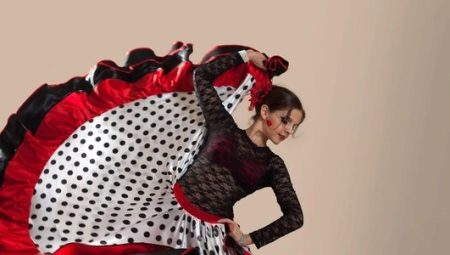When someone talks about flamenco, an image of a beautiful young woman, dressed in a long skirt of bright red color, immediately appears before her eyes. A carnation gracefully perched in her hair, necklaces of a large stone, and earrings in her ears.

In recent years, this passionate Spanish dance is gaining more and more popularity in our country. Many fall in love with the rhythms of flamenco and devote their whole life to it. Along with the accuracy of movements in this dance, the correct costume is important. Why does he look that way? How to create this little masterpiece with your own hands? Learn further.
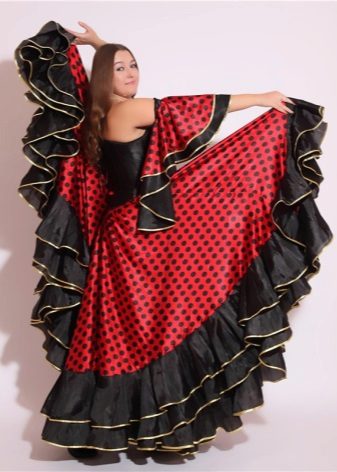
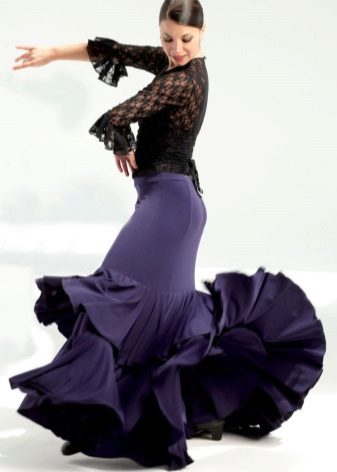
Features
Fitting from above, expanding from below, embroidered with many air frills. The Spanish flamenco skirt doesn’t look so accidental. It fits on top - for beauty, to emphasize the grace of the dancer's forms.
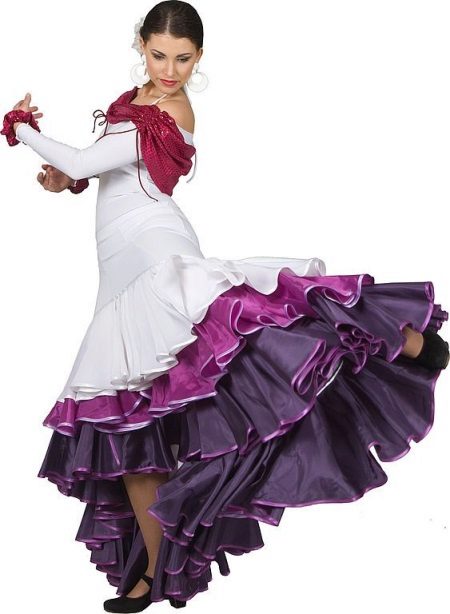
Expands to the bottom - for convenience, so as not to hamper the movement. Shuttlecocks and ruffles - the final chord of each stroke. They serve as additional expressive means for flamenco performers.

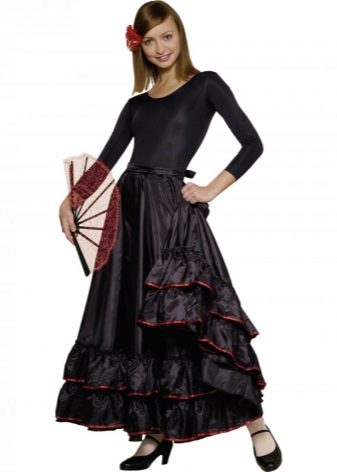
There are two main varieties of outfits for flamenco - these are special dresses or skirts. The latter can also be classified into two styles. The first option is the so-called gypsy costume. This is a multi-layered skirt, fitting hips and expanding just above the knee.
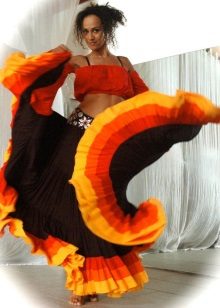
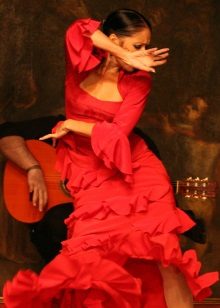
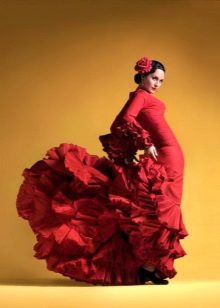
A dress is also called a gypsy costume, in addition to the skirt described above, there is a fully-fitting upper with a deep oval neckline and tight-fitting sleeves, the cuffs of which are also decorated with several layers of flounces.

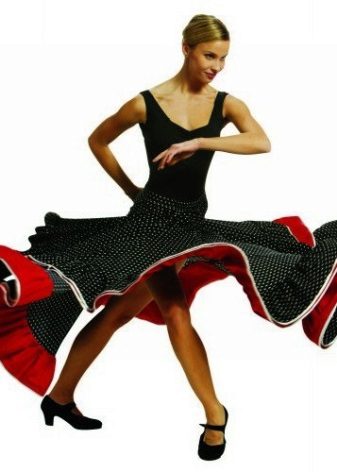
It is this version of the costume for flamenco that can be found in a variety of color variations, they are often sewn from fabric to large peas.

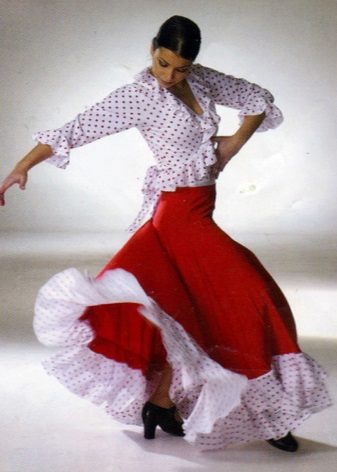
This costume tradition is preserved throughout the entire existence of flamenco.Since the dance was invented by Spanish gypsies, their clothing style spread to this culture.
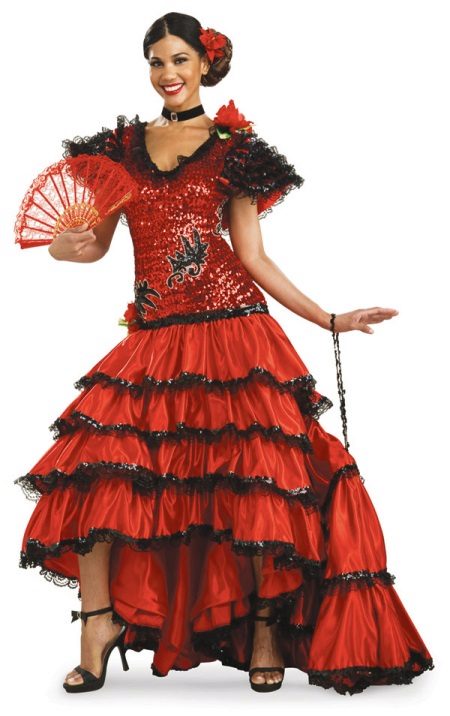
Another option for a Spanish dance outfit is baht. This is a skirt with a long train, or, as it is sometimes called, a ponytail. In this case, monophonic fabrics of deep colors are often chosen for sewing.
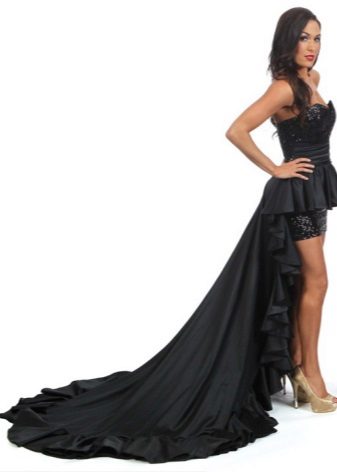

Although the color of the skirt does not depend on the style, but on what flamenco style to be performed in it. The style is also chosen according to the same principle - not every dance can be performed in bat.

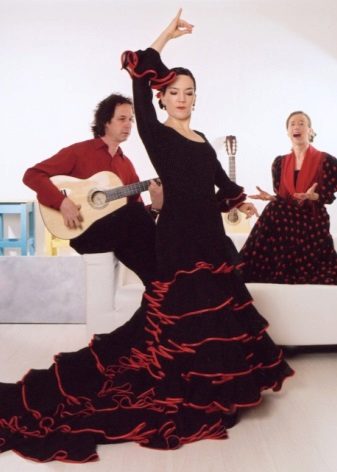
Spectacular images
The flamenco dance carries a special energy. And its performers should not only move impeccably, they must create a vivid stage image for a good performance.
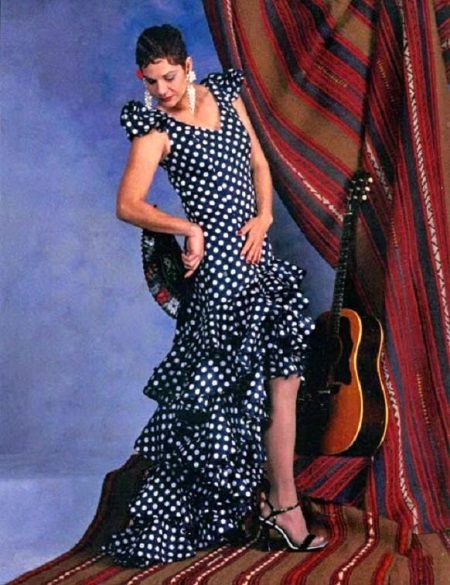
The main role here is played by a dress or skirt. But details are important. Each baylaor - flamenco performer - adorns her hair with a flower. This is usually a rose or a carnation. It is not necessary to choose a red flower; you can select floristry in accordance with the general gamut of the costume.
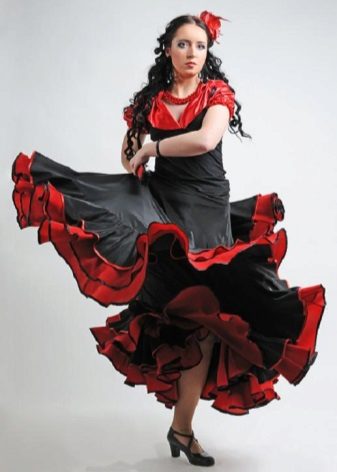
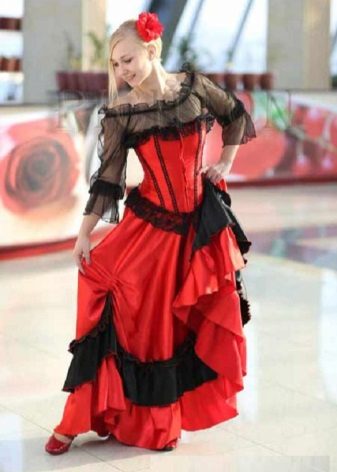
Since hands play a large role in Spanish dance, their appearance should also be taken care of. Bright manicure, rings with stones, large bracelets - all this will help to add expressiveness to each wave of the hand.
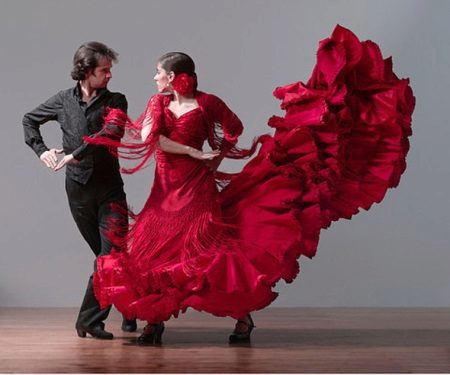
This also applies to other parts of the body that are in the public eye. Bright necklaces will be appropriate on the neck, large earrings in the ears.
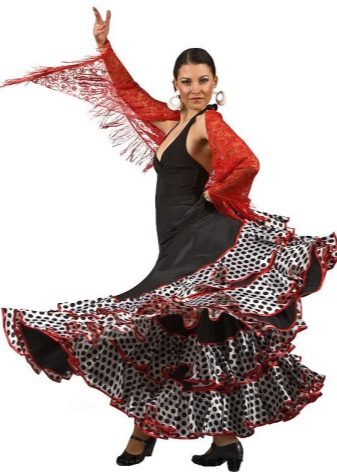

Do not be afraid to overdo it, flamenco - this is not the dance in which minimalism is required. However, even a striking image should, nevertheless, be selected with taste. You can combine 3-4 colors, but they should be in harmony with each other.
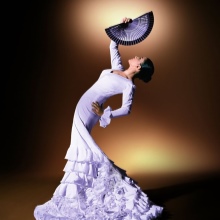
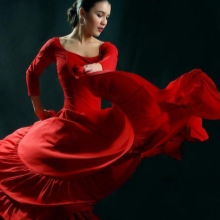

Costume for flamenco: what to choose the top for the skirt?
In the matter of choosing a costume for flamenco, the skirt significantly outperforms the dress for one simple reason - it is more practical. Changing only the top, the dancer will have a lot of options for the stage image. It is simpler and more profitable than sewing several dresses.
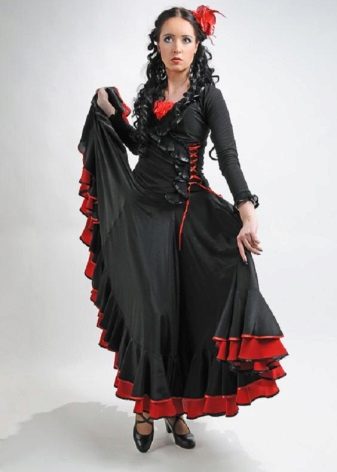
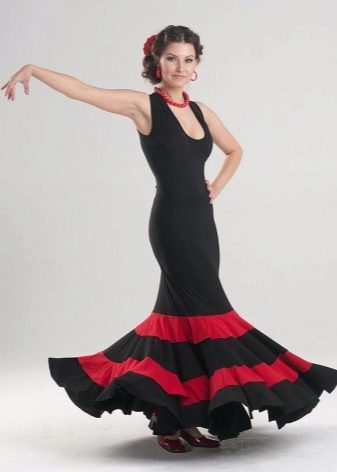
In fact, there are two categories of choice - the style of the top and its color. If we talk about the style, then here you have a wide scope for imagination. The only strict rule that I would like to indicate is that the top, combined with a skirt for flamenco, should be tight-fitting. Otherwise, it all depends on your personal preferences.

Almost everything is appropriate: blouses with long or short sleeves, turtlenecks with a shortened collar, all kinds of tops (including crop tops). A short sleeve at the top for a flamenco costume is very often made in the form of a "flashlight" or decorated with frills.
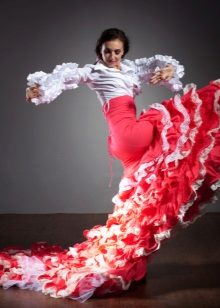

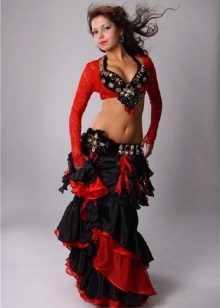
As for the color of the selected top, it should be either tone-on-tone to the skirt, or contrasting colors. If the skirt is in peas, then the top should be either absolutely identical fabric or plain, its color should match either the color of the pea. Or with the main color on the skirt.


How to sew?
Amazing costumes for professional flamenco performers are sewn by eminent couturiers. Famous bayolars from all over the world prefer to order their stage costumes in Spain itself.
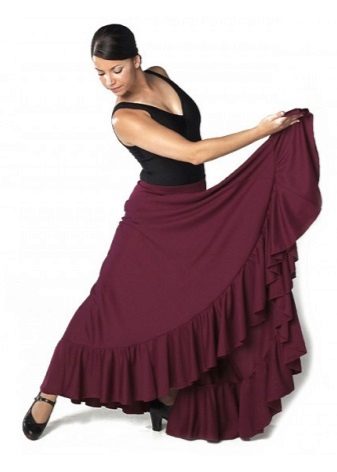


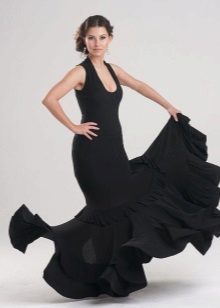
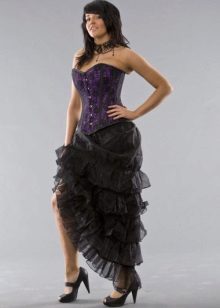
However, for ordinary fans of this dance, doing it just as a hobby, this option seems impossible. Moreover, this hobby can be very expensive if you take the purchase of all the necessary elements of a flamenco costume in stores. But to learn how to design and sew a skirt for the performance of this dance, it turns out, is very simple.
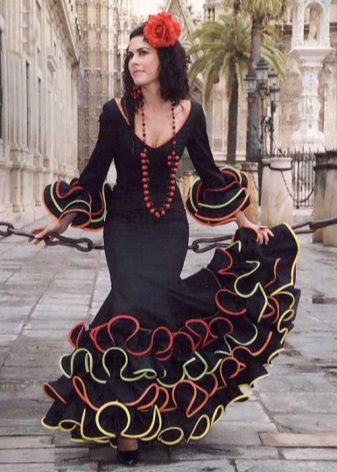
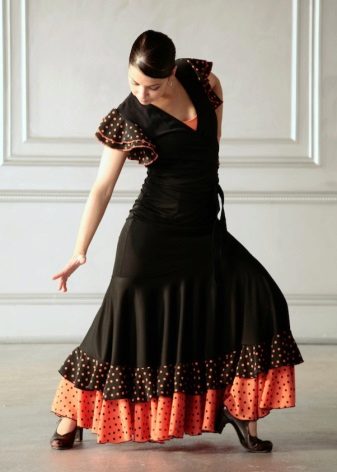
An example of an elementary Spanish skirt is the “sun” style.
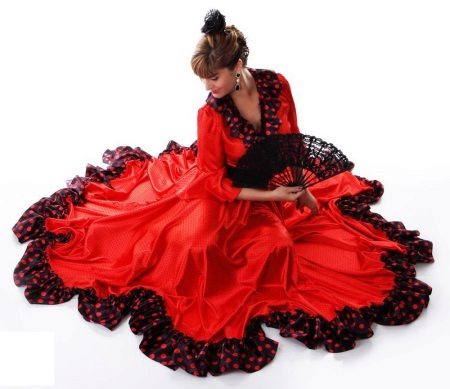
Consider the process of modeling and tailoring a skirt-sun on a yoke with a shuttlecock and a shifted center. To create you will need:
- 1.5 meters of dark burgundy fabric (for the base of the skirt);
- 2.5 meters of black fabric (for example, chiffon; for the shuttlecock);
- 25 meters of black oblique inlay (for finishing the shuttlecock; you can also pick it to match the base of the skirt);
- 1 zipper (for fastener);
- 2 small hooks (for a fastener);
- 1 m of braid 3 cm wide of black or dark burgundy color (for a belt);
- graph paper and drawing accessories;
- threads matching the fabrics used;
- sewing machine, overlock, pins, scissors and other tools.
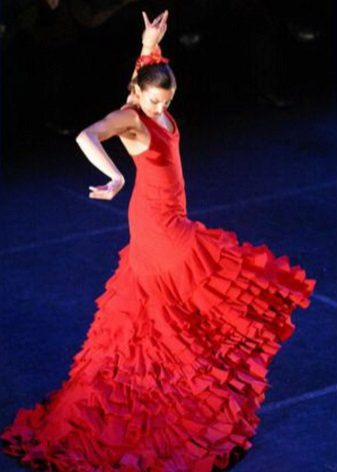

Note! Any fine fabric is suitable, because the skirt should be light and flowing. You can choose between satin, chiffon, crepe satin, koshibo. Stretch fabrics that stretch in the transverse direction are also relevant here. Such fabrics hug the body very gracefully.
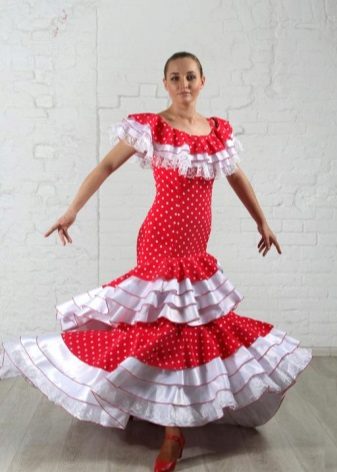
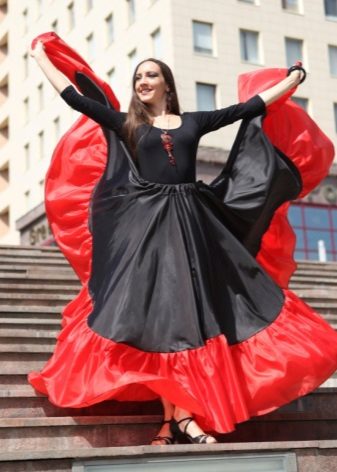
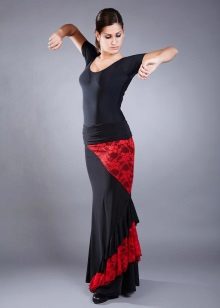

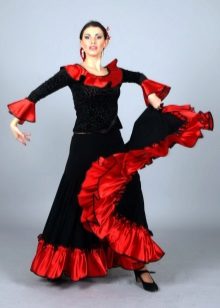
The process of sewing a Spanish skirt for flamenco, one of the models of which we offer you, is quite simple. But it will take a lot of time, be prepared for this. The algorithm is as follows:

From the base fabric, cut out a circle with a diameter of 150 cm. To do this, fold the dark bard cloth four times and place on a large table. Next you have to make an impromptu compass. They will serve as a lace with a length of 80 cm and a remnant (or crayon). One end of the lace must be attached to the corner of the folded fabric, which accounts for the center. Pull the other end to the edge of the bundle and attach a remnant to it. Sweep from one edge of the folded fabric to the second. So you get ¼ of the desired circle. Unfold the fabric gradually, completing the missing fragments using this technique. Cut a drawn circle.
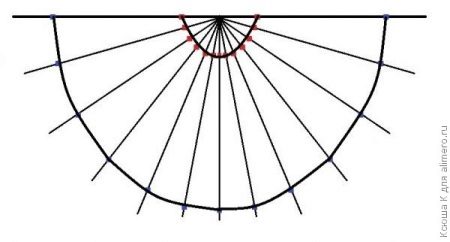
On the resulting blank, outline the inner circle, the diameter of which should be equal to the circumference of your hips, divided by 6.3. You need to draw the inner circle using the technology described above.
Please note that the center of our skirt is offset. Move 20 cm from the center of the workpiece - this will be the heart of the inner circle. When a circle is drawn, cut it out. Now the basis for the skirt is finally ready.

From the fabric for the shuttlecock, cut out its elements. To do this, cut the matter into 15 squares of 50 x 50 cm. With each cut, make the following manipulations: draw an outer circle with a diameter of 25 cm and an inner circle with a diameter of 5 cm with a cord and remnant; cut the inner circle and make a side incision from the center to the edge in a straight line.
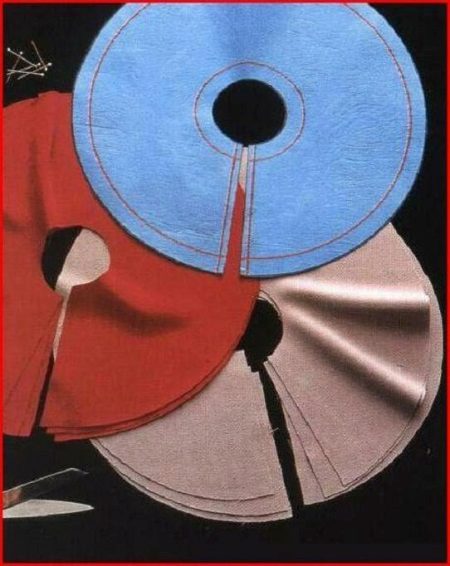
When all 15 pieces are ready, sew them together to make one tape. Process the finished shuttlecock with an inlay (it is cut in half, the edge of the shuttlecock is inward; bast, stitch).
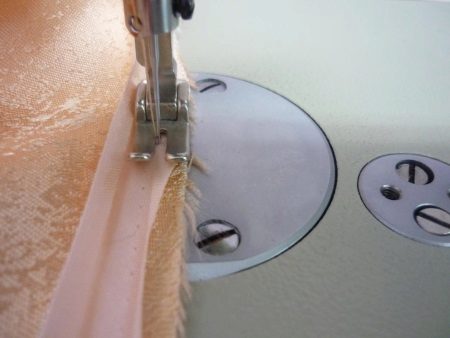
Measure the total length of the shuttlecock and the resulting hem of the skirt. If suddenly the hem is longer than the shuttlecock, cut off the excess fabric around the entire perimeter of the base of the skirt. When the lengths coincide, you can try on and stretch the shuttlecock along the skirt.

Try the blank on yourself. Determine the exact place at the waist or hips where this part of the skirt will be held. Measure the distance from the edge of the workpiece to the waist - get the width of the yoke. Add another 2 cm for the seams.
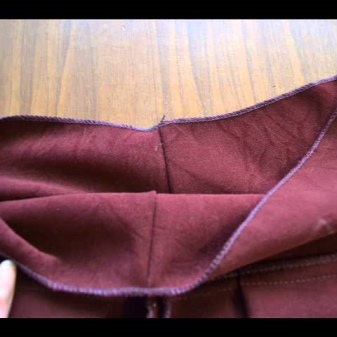
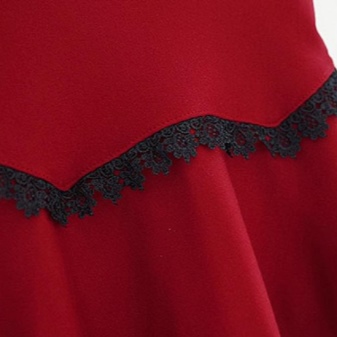
Cut the yoke out of the scraps of the main fabric. To do this, draw 4 rectangles (the width of the yoke - see above, the length of each element - the circumference of the hips divided by 4 and add 3 cm). Sew the two parts together - this is in front of the coquette. Connect the remaining two elements, and between them fasten the zipper, this is the back with a clasp. Do not do side seams yet.
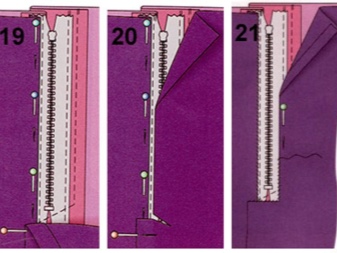
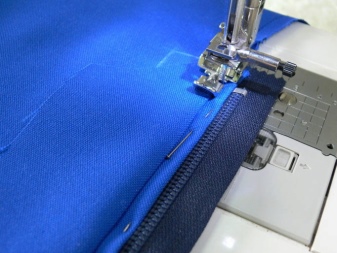
Align the center of the front of the skirt with the seam of the yoke designed for him. Sweep from the center to the edges. Do the same with the back yoke. Seam along the sides. Try on the product.
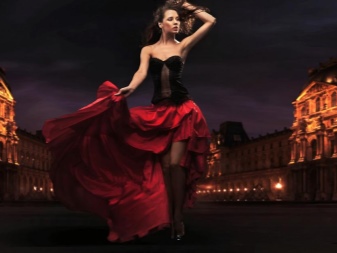
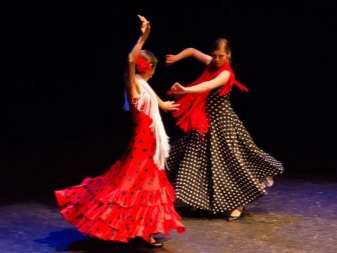
If the skirt fits the hips perfectly with the zipper fastened, then you did everything right, and you can sew all the seams on a typewriter.
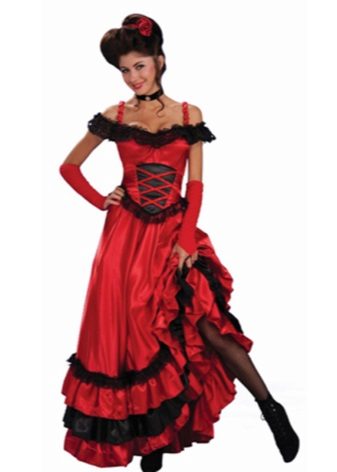
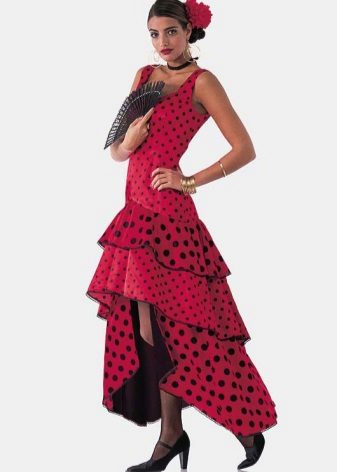

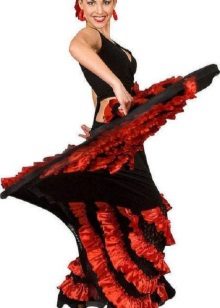

The final chord is the manufacture of the belt. Wrap 50 mm from the top of the skirt inward and bast. Prepare the tape for the belt, cutting off according to the width of the waist plus 4 cm. Attach the upper edge of the skirt to the middle of the tape, stitch and immediately stitch the seam. Bend the edges of the future belt inward twice and sew.
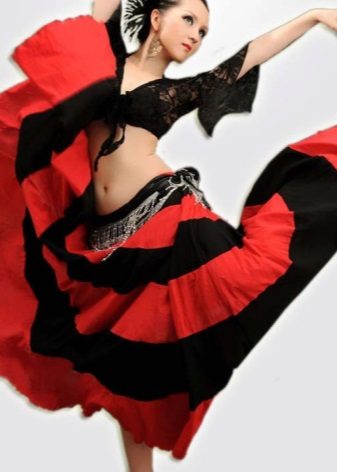
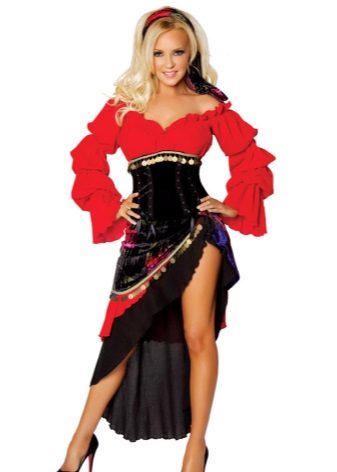
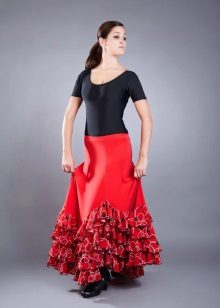

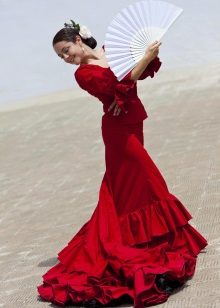
Sew hooks on the back (above the zipper). Process all the seams on the overlock with a zigzag. That's all! Your flamenco skirt is ready!
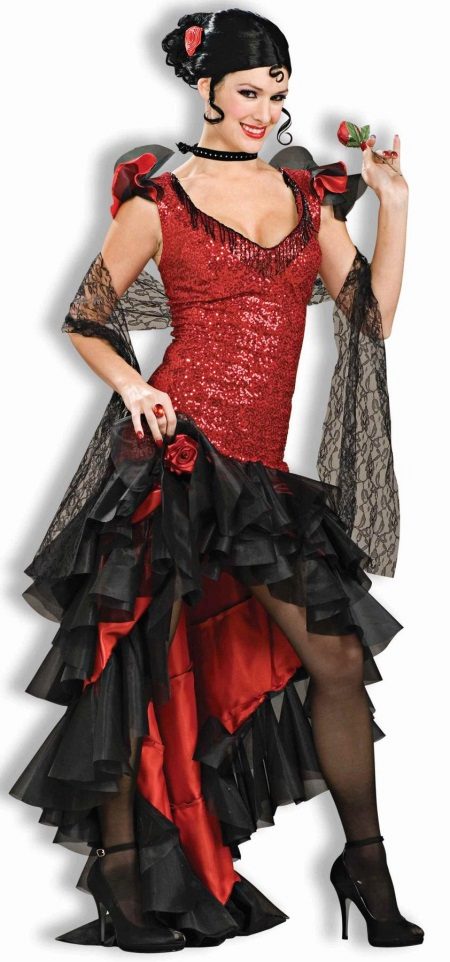
You can also, taking our master class as a basis, simulate the author's styles of flamenco skirts, experiment with lengths, a combination of colors and fabrics!
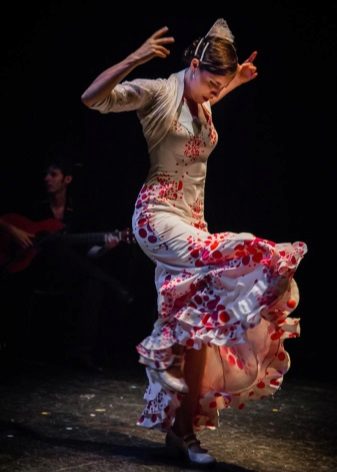

In conclusion, we offer our readers a video that tells about various ways of sewing a skirt-sun - the most popular model of dancewear.
